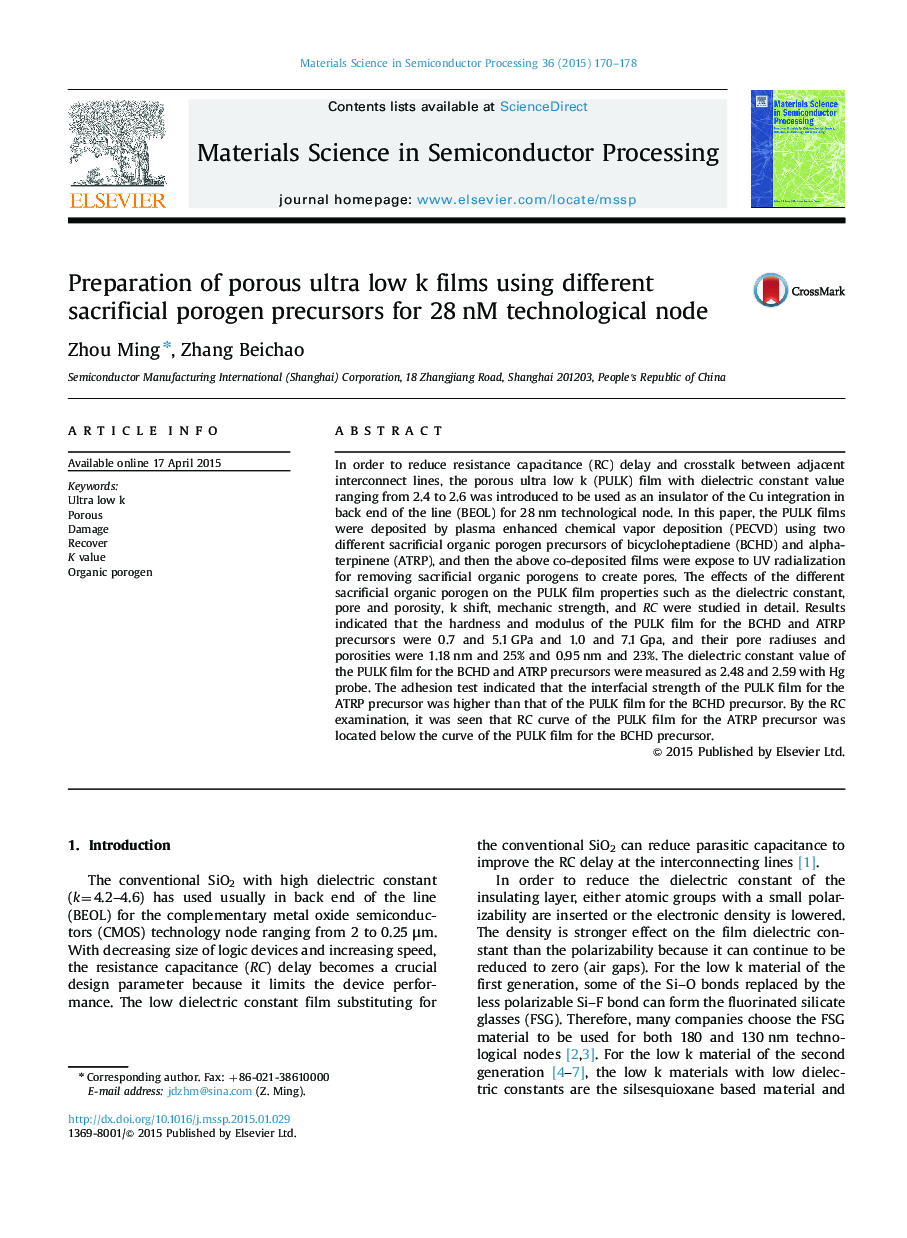| Article ID | Journal | Published Year | Pages | File Type |
|---|---|---|---|---|
| 7119274 | Materials Science in Semiconductor Processing | 2015 | 9 Pages |
Abstract
In order to reduce resistance capacitance (RC) delay and crosstalk between adjacent interconnect lines, the porous ultra low k (PULK) film with dielectric constant value ranging from 2.4 to 2.6 was introduced to be used as an insulator of the Cu integration in back end of the line (BEOL) for 28Â nm technological node. In this paper, the PULK films were deposited by plasma enhanced chemical vapor deposition (PECVD) using two different sacrificial organic porogen precursors of bicycloheptadiene (BCHD) and alpha-terpinene (ATRP), and then the above co-deposited films were expose to UV radialization for removing sacrificial organic porogens to create pores. The effects of the different sacrificial organic porogen on the PULK film properties such as the dielectric constant, pore and porosity, k shift, mechanic strength, and RC were studied in detail. Results indicated that the hardness and modulus of the PULK film for the BCHD and ATRP precursors were 0.7 and 5.1Â GPa and 1.0 and 7.1Â Gpa, and their pore radiuses and porosities were 1.18Â nm and 25% and 0.95Â nm and 23%. The dielectric constant value of the PULK film for the BCHD and ATRP precursors were measured as 2.48 and 2.59 with Hg probe. The adhesion test indicated that the interfacial strength of the PULK film for the ATRP precursor was higher than that of the PULK film for the BCHD precursor. By the RC examination, it was seen that RC curve of the PULK film for the ATRP precursor was located below the curve of the PULK film for the BCHD precursor.
Related Topics
Physical Sciences and Engineering
Engineering
Electrical and Electronic Engineering
Authors
Zhou Ming, Zhang Beichao,
